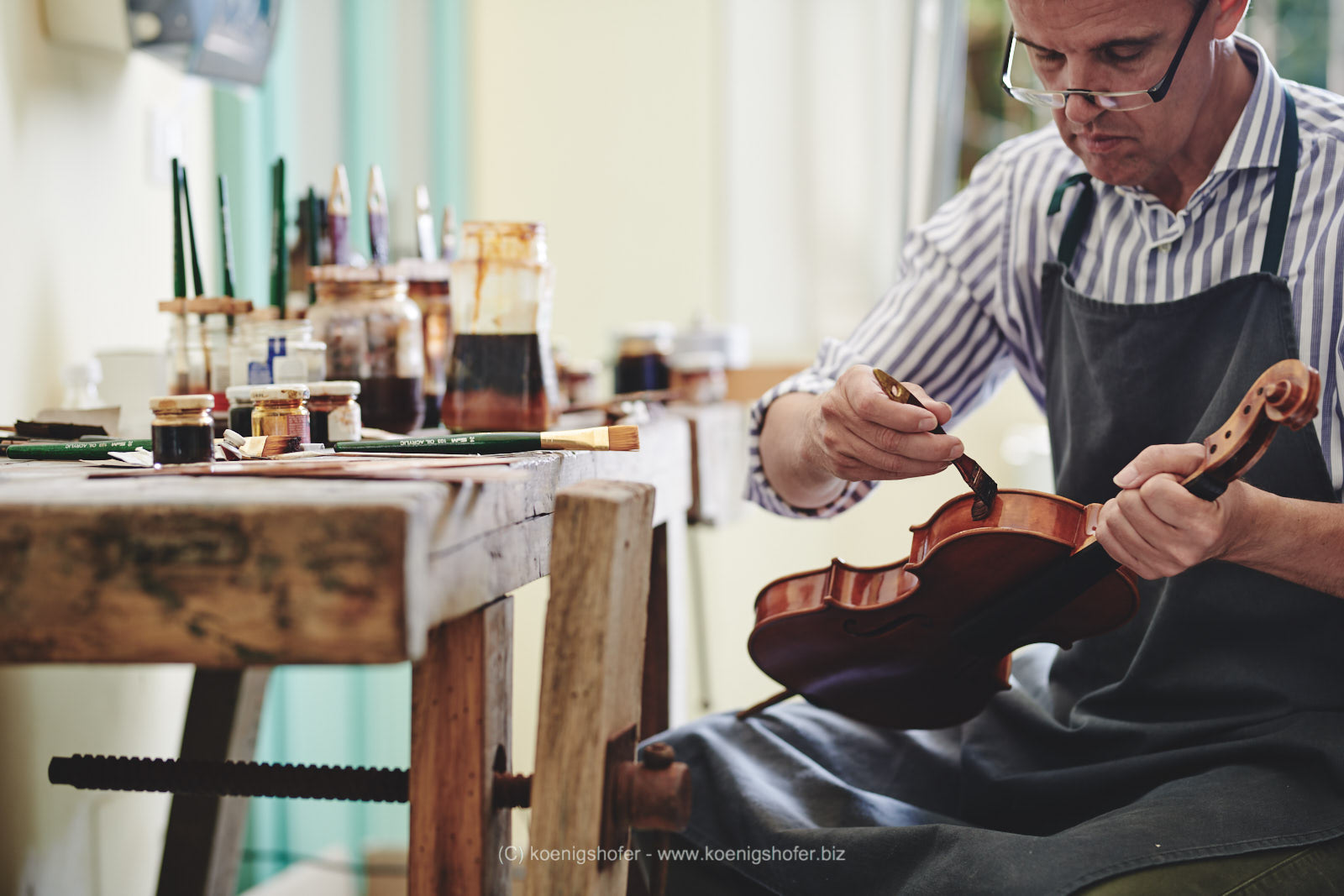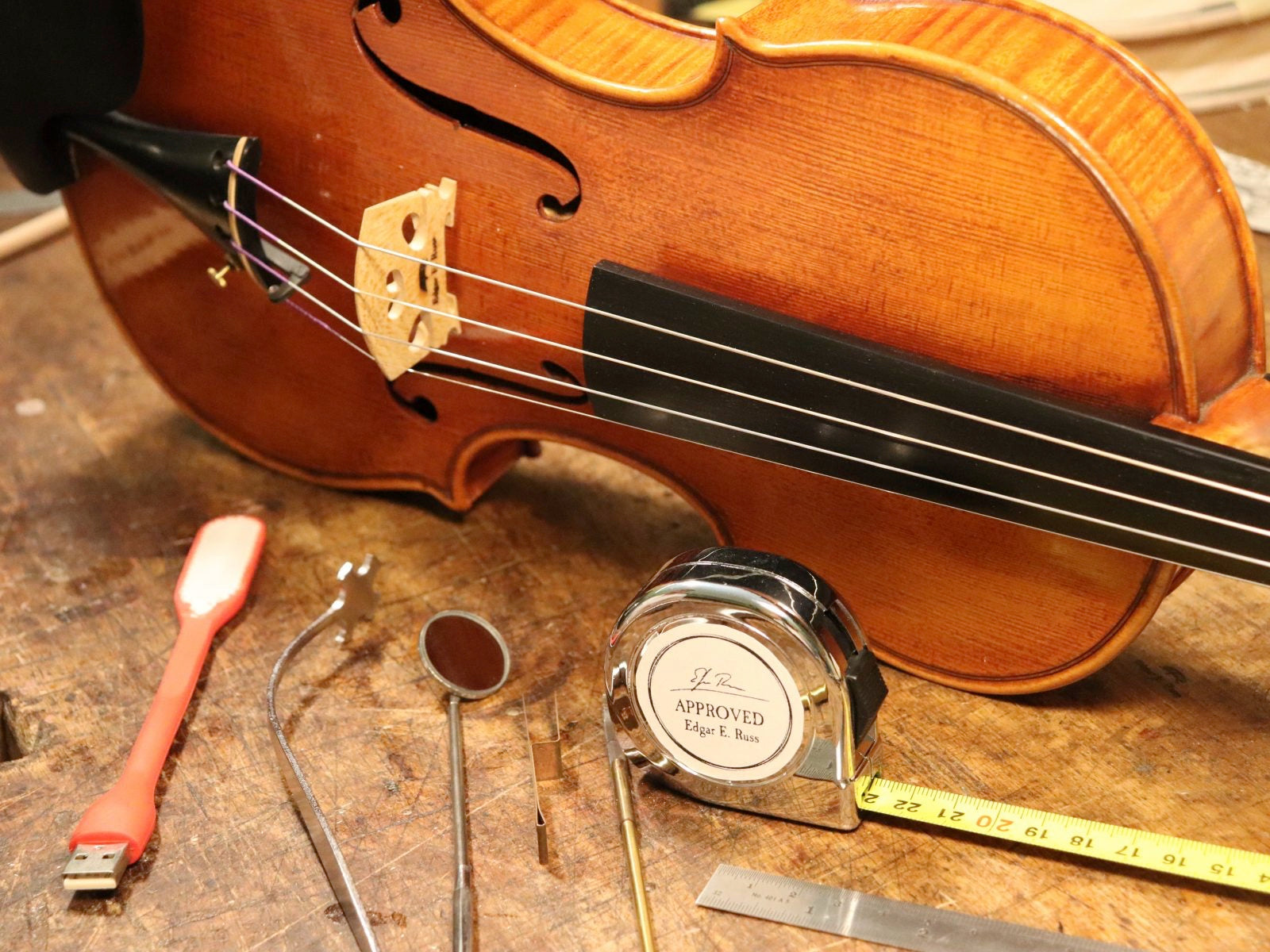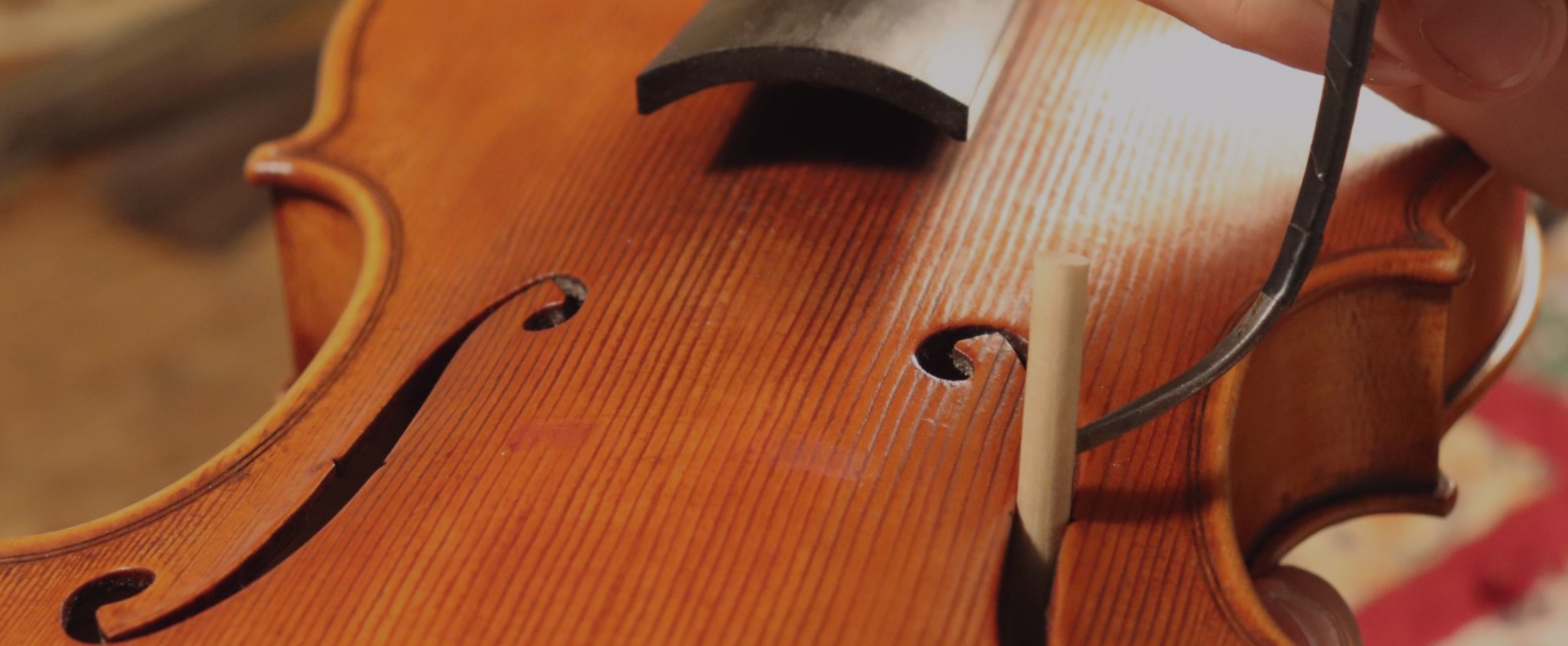
Introduction to Varnishing in Violinmaking
Let's talk about the varnish in violinmaking.
This topic seems to be full of secrets: people are talking so much about it that is even believed that there is a “magic varnish” you apply on the violin and that makes it sound incredible. Spoiler alert: it does not exist.
There still are a lot of varnishes that can “kill” your instrument. By “kill” I mean turning your instrument into something different from you expect.
When I first came here to Cremona, already 35 years ago, people were talking a lot about oil and spirit varish. In violinmaking school they were (and are) teaching just spirit varnish, not because they don’t like the oil one, but only because it is very difficult to cook it in the school: it is very dangerous. I would suggest you not to cook it in your house/backyard.
There are two types of varnishes:
- Oil Varnish: the basic ingredient here is the oil, which is also the liquid part of your varnish. You cook this oil together with the resin (You have to cook only outside and when it’s not raining). When the two cook together they make a chemical reaction and the result is a transparent liquid (which is actually more brown color, it will become more and more transparent over time).
Oil varnish is what I use on my master instruments. The biggest difference is in the cooking process: first you cook this type of varnish and then you leave it in a big jar (I usually leave it for 4/5 months) and you make it “rest”. All the small particles inside settle down and then I just take a little bit of the liquid and put it into smaller jars so that there is not a lot of oxygen. I close it and from time to time I take a small jar to varnish my instrument. If I would leave the whole batch of varnish in a big jar, polymerization would make my varnish every day more dense.
Once that is done, I still have to put my color inside. And pay attention: the color changes every jar, and every time I varnish I have to check if the color is exactly what I want.
You can easily understand how complicated the matter is and how time consuming the whole process is. However, it still remains my favorite kind of varnish. - Spirit Varnish: it starts from an alcohol base: you can buy it in every home depot and it usually has a reddish color. You can use the cheaper one, and even not worry about that red tint: it’s just going to make you start from a colored mix.
The alcohol is going to be your solvent. Into it you will put resins. It is way easier than the previous one because no cooking is required. After you give it a good shake, you will have to filter it and then put colors to obtain the perfect tint. Let’s just say it is very simple to make and to explain.
I would say that generally you shouldn’t be able to tell the difference between oil and spirit varnish (if the same person applied both of them). It is always very difficult to tell with precision which kind of varnish has been used. Especially for oil varnish, after 12 years, from the chemical point of view, it is really difficult to tell the difference.
I think there is a reason in differentiating the kind of varnish you use on your instrument: not that the spirit varnish sounds “worse” than the oil one. For many years I though the oil varnish is responsible for the good sound in my master instruments. But I discovered it has a lot to do with the wood preparation: on the oil based varnish there is another step necessary to the process, the preparation of the wood in order to stop the oil to soak it.
To explain this, let’s use a metaphor: the piece of woke is like a sponge, spirit varnish evaporates while you put it on so it does not need a barrier that keeps it from going too deep into the wood, on the other hand oil varnish has a lot of time to get into the pores because polymerization takes a lot of time.
Therefore, the wood preparation is key. I used to make it from the yolk, and for many years I also applied one thin layer of spirit varnish and only then proceeded with oil varnish.
Since I met Brigitte Brandmair, who wrote a very good book about Stradivari’s varnishfrom a chemical point of view, I changed slightly my approach to the issue.
In her book, she writes about the “magic year” of 1686, a turning point in violinmaking history when Guadagnini, Stradivari, Guarneri and other violinmakers changed the way they varnished, introducing a specific protein that affected the pores and stopped the varnish to soak the wood. They still haven’t been able to pinpoint the specific protein, but I personally use that preparation and I have the feeling that it actually changed something in the sound of my instruments for the better.




3 comments
Intresting
Bob
Intresting
Bob
Very interesting subject. But maybe I was lucky to identify a few flaws like:
1. “For many years I though the oil varnish is responsible for the good sound in my master instruments.” though → thought ?
2. “To explain this, let’s use a metaphor: the piece of woke is like a sponge…” woke → wood
Liebe Grüße!
Gerhart Hlawatsch
Leave a comment
This site is protected by hCaptcha and the hCaptcha Privacy Policy and Terms of Service apply.